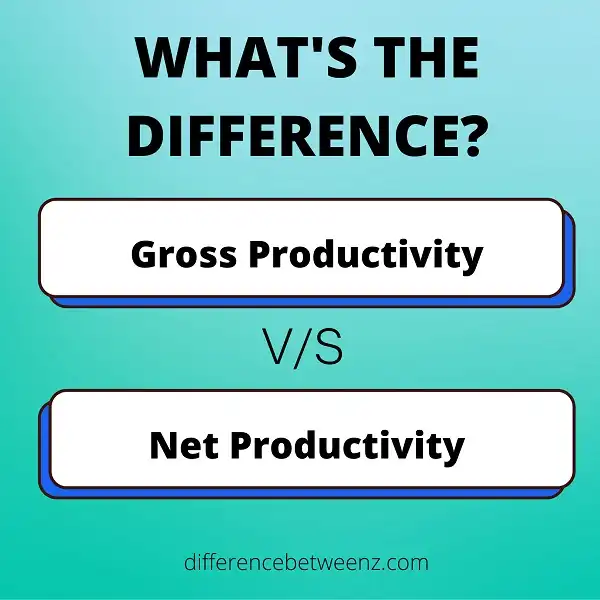In order to sustain an ecosystem, it is important to understand the difference between gross and net productivity. Gross productivity is the rate at which an organism produces biomass per unit of time, while net productivity is the rate at which new biomass is added to the ecosystem minus the rate at which old biomass is removed. In other words, gross productivity measures how much an organism contributes to the current growth in the system, while net productivity measures how much an organism contributes to overall system stability. By understanding these concepts, we can better manage and protect our ecosystems.
What is Gross Productivity?
Gross productivity measures the rate of productivity for an ecosystem. It is the total amount of organic matter that is created by plants in a particular area over a given period of time. Gross productivity is important because it is a key factor in determining the carrying capacity of an ecosystem. The higher the gross productivity, the more food, and other resources are available to support wildlife. As such, gross productivity is a key factor in determining the health of an ecosystem.
What is Net Productivity?
Net productivity is the rate at which new biomass is produced in an ecosystem. It’s a measure of how much new growth an ecosystem can support, and it’s determined by the balance between photosynthesis and respiration.
- Net productivity can be positive, negative, or zero. When photosynthesis exceeds respiration, net productivity is positive and new biomass is being created. When respiration exceeds photosynthesis, net productivity is negative and the ecosystem is losing biomass. And when the two are in balance, net productivity is zero and the ecosystem is neither gaining nor losing biomass.
- Net productivity is important because it determines how much new life an ecosystem can support. A high net productivity means that an ecosystem can support a large population of plants and animals. Low net productivity means that an ecosystem can’t support as many plants and animals. Net productivity also determines how quickly an ecosystem can recover from a disturbance like a fire or a drought.
- Ecosystems with high net productivity can recover quickly because they have a lot of new growth to replace what was lost. Ecosystems with low net productivity take longer to recover because they don’t have as much new growth to replace what was lost. Net productivity varies from place to place and from one time of year to another. It also varies depending on the type of ecosystem.
- For example, forest ecosystems tend to have higher net productivity than grassland ecosystems because trees grow faster than grasses. Net productivity also varies depending on the amount of light, water, and nutrients available. When these resources are plentiful, photosynthesis increases and net productivity goes up. When these resources are scarce, photosynthesis decreases and net productivity goes down.
Difference between Gross and Net Productivity
Gross productivity and net productivity are two measures of productivity in an ecosystem. Gross productivity is the rate of primary production or the amount of biomass produced by photosynthesis.
- Net productivity is the rate of secondary production or the amount of biomass that is available for consumption by herbivores. Gross productivity is always greater than net productivity because some of the biomass produced by photosynthesis is used by plants for respiration. The difference between gross and net productivity is important to understand because it affects the amount of food that is available for animals in an ecosystem.
- Gross productivity represents the maximum potential food availability, while net productivity represents the actual food availability. Understanding these differences is essential for managing ecosystems and ensuring that they remain productive and supportive of biodiversity.`- Gross Productivity: The rate of primary production, or the amount of biomass produced by photosynthesis- Net Productivity:
- The rate of secondary production, or the amount of biomass that is available for consumption by herbivores- Gross productivity is always greater than net productivity because some of the biomass produced by photosynthesis is used by plants for respiration.
– The difference between gross and net productivity is important to understand because it affects the amount of food that is available for animals in an ecosystem. Gross productivity represents the maximum potential food availability, while net productivity represents the actual food availability.
– Understanding these differences is essential for managing ecosystems and ensuring that they remain productive and supportive of biodiversity.`
Conclusion
The difference between gross and net productivity is an important concept to understand when studying ecosystems. By understanding the difference, we can more accurately assess the health of an ecosystem and predict how it will respond to changes. In this blog post, we’ve outlined the differences between gross and net productivity and given some examples. We hope this information was helpful!


